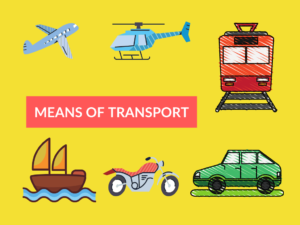Difference between City and Village
An urban city and a rural village are two contrasting types of settlements that differ in terms of various aspects such as size, population, infrastructure, lifestyle, and more. This article explores the key differences between cities and villages, their characteristics, and how they are used.
What are Cities?
A city is a large and densely populated human settlement that offers a wide range of amenities, facilities, and services. It is characterized by its well-developed infrastructure, including roads, transportation systems, utilities, and public services. Cities generally have a high concentration of economic activities, industries, educational institutions, healthcare facilities, and cultural landmarks.
Examples of Cities
Some renowned cities around the world include:
- New York City, USA
- Tokyo, Japan
- London, United Kingdom
- Mumbai, India
- Sydney, Australia
Uses of Cities
Cities play a significant role in socio-economic development and offer various advantages such as:
- Job opportunities
- Better healthcare facilities
- Access to quality education
- Cultural diversity and entertainment options
- Advanced transportation networks
What are Villages?
A village is a small and relatively less densely populated settlement predominantly located in rural areas. Villages are characterized by their close-knit communities, agricultural activities, and a simpler way of life. They typically have limited infrastructure, basic amenities, and lesser availability of public services compared to cities.
Examples of Villages
Here are some examples of villages from different countries:
- Mawsynram, Meghalaya, India
- Bibury, Gloucestershire, United Kingdom
- Giethoorn, Netherlands
- Shirakawa-go, Gifu, Japan
- Stowe, Vermont, USA
Uses of Villages
Villages serve various purposes, including:
- Agricultural production
- Promoting rural tourism
- Preserving traditional cultures and practices
- Providing a peaceful and pollution-free environment
- Supporting cottage industries
Differences between Cities and Villages
| Area of Difference | Cities | Villages |
|---|---|---|
| Population Density | High | Low |
| Infrastructure | Well-developed | Basic |
| Economic Activities | Diverse and extensive | Predominantly agricultural |
| Services | Abundant | Limited |
| Education | Multiple educational institutions | Limited schools |
| Transportation | Advanced networks | Basic connectivity |
| Healthcare | Advanced medical facilities | Basic healthcare centers |
| Lifestyle | Busy and fast-paced | Relaxed and slow-paced |
| Community | Diverse and cosmopolitan | Tightly-knit |
| Social Events | Abundance of cultural events | Localized traditions and festivals |
Conclusion
In summary, cities and villages differ significantly in terms of population density, infrastructure, economic activities, services, education, transportation, healthcare, lifestyle, community, and social events. While cities provide extensive amenities and opportunities, villages offer a simpler and more tightly-knit way of life.
People Also Ask
Here are some commonly asked questions about cities and villages:
- What is the main difference between a city and a village?
- Are cities safer than villages?
- Which offers a better quality of life, a city or a village?
- Can cities and villages coexist?
- Do villages lack access to modern technology?
The main difference lies in the size, population, infrastructure, and lifestyle. Cities are larger, more populated, and have better-developed facilities compared to villages.
It depends on various factors, but cities generally have better security and law enforcement due to their higher population and availability of resources.
It is subjective and depends on personal preferences. Cities provide more opportunities and amenities, while villages offer a simpler and closer community experience.
Absolutely. Cities and villages complement each other and contribute to a balanced socio-economic system. They have different roles and serve various purposes.
While villages may have limited access to certain modern technologies, advancements in communication and connectivity have greatly improved their access to information and services.



